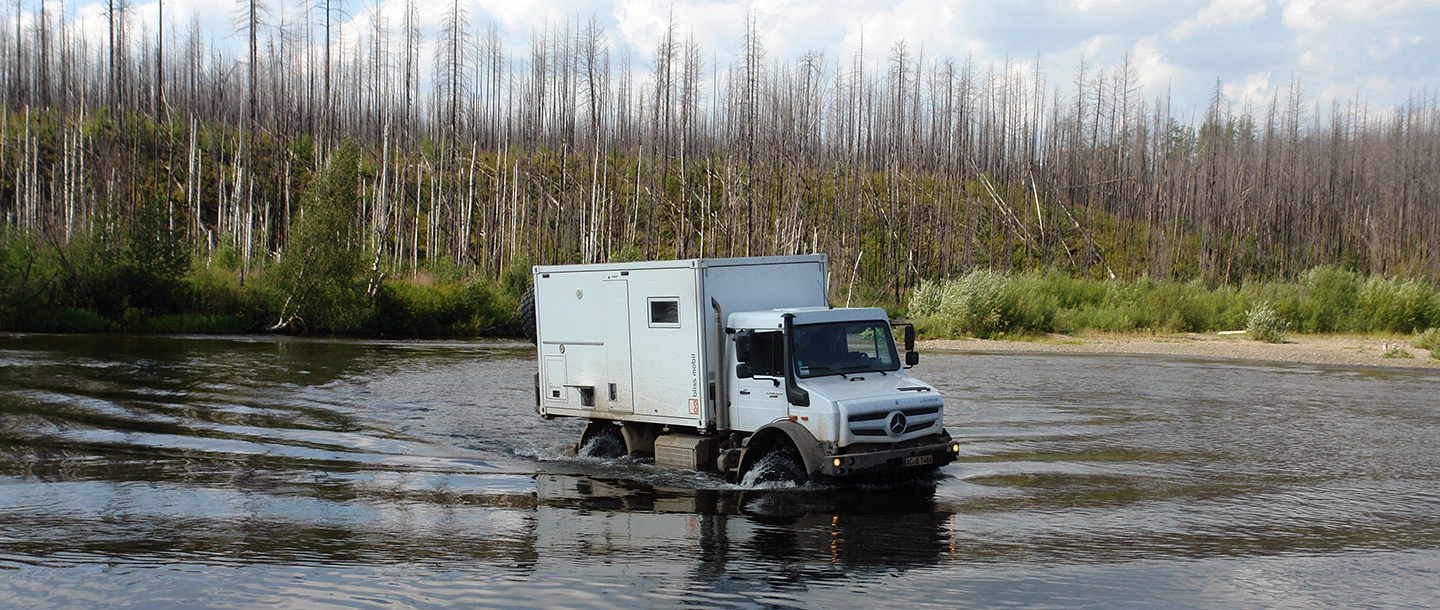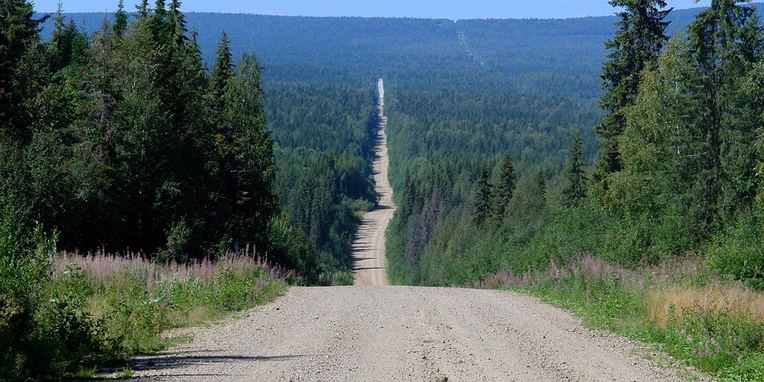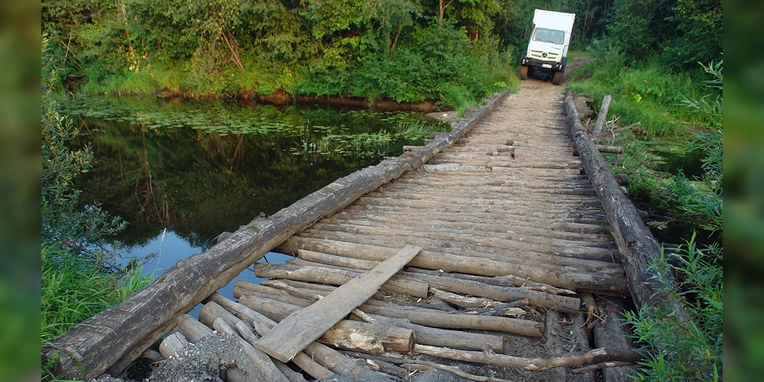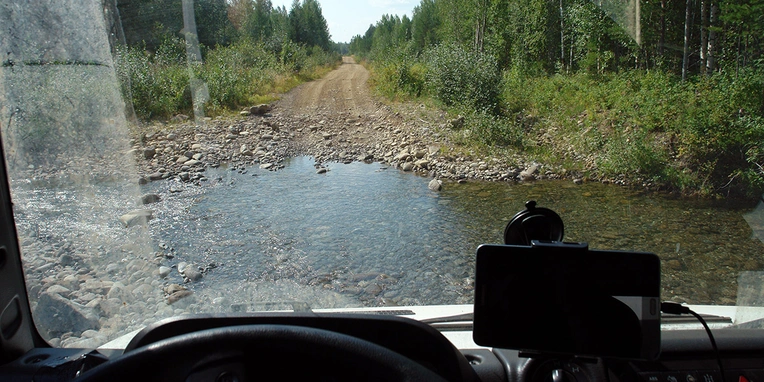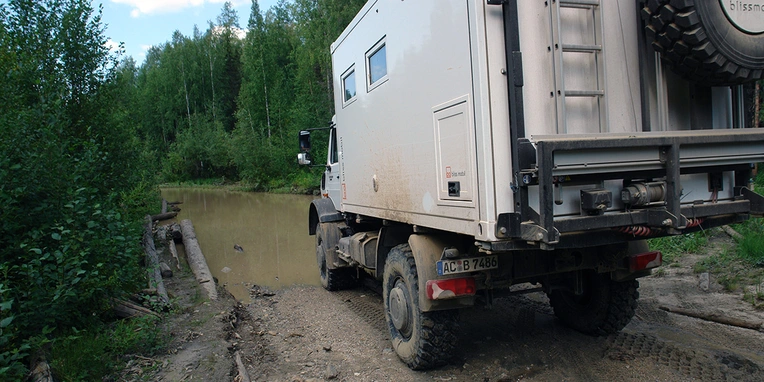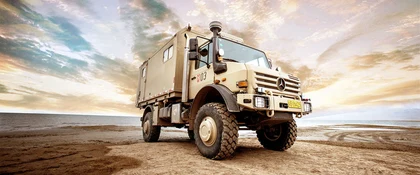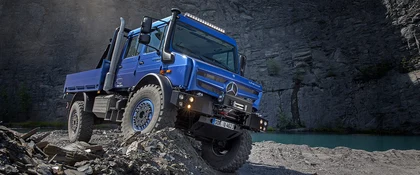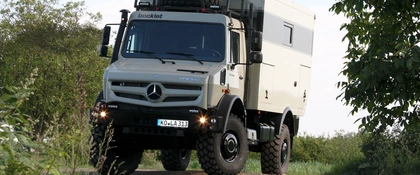Unimog U 5023 passes off-road endurance test in the Siberian Ural Mountains.
Endurance test at a place of extremes: It's four years since Günther Schumacher set off in a Unimog U 5023 to Siberia. "A journey full of adventure to the end of civilisation," is how he himself puts it. The Ural Mountains are both a challenging and magical holiday destination – for Mercedes-Benz Special Trucks he recalls the highs and lows of his exciting mountain journey in the Unimog.
Off the asphalt.
As an experienced truck fan, Günther Schumacher had already travelled the world – for the most part in Asian countries such as Mongolia, Kyrgyzstan, Tibet and China – completing more than 200,000 km in various trucks, before his great Siberia expedition . Now the Ural Mountains were the globetrotter's goal. His partnership with the Unimog on a joint adventure was definitely a win-win situation: Günther Schumacher knew he had one of the best off-road trucks and Mercedes-Benz Special Trucks had given him a testing job too. The plan was to test the then new Unimog U 5023 in a long and enduring extreme situation.

From demonstration car to off-road champion.
Prior to its career as an expedition vehicle, the white Unimog U 5023 with a box body living area from bodybuilder Bliss Mobil was presented at an automotive show in Moscow. Then, together with its driver who had arrived from Aachen, it was sent 160 km north to the automotive testing grounds in Dimitrov, where the press reported on it in detail. The driver and vehicle followed the call of Siberia. 1000 km before reaching the Urals, Günther Schumacher met up with his travelling companion, Max, who was in his own truck. Because for safety reasons you don't make a journey like this on your own. It was time to go: two men, two extreme off-road vehicles and a magical destination – the Manpupuner rock formations with their seven stone pillars on the north plateau of the Ural Mountains.
Two powerhouses on the winter road.
Visitors to the up to 42 m high rocks can only reach this magical place across frozen rivers in snowmobiles or by helicopter. The challenge for Günther Schumacher was obvious: to get as close to the "magical place" as possible. The adventure really got started when the paved roads ended. Once the pioneers had left the last smaller village and were heading towards the mountains, the conditions became noticeably worse. The gravel roads became muddy tracks that were normally only used by chain-driven excavators with balloon tyres. Following the trail of these behemoths used for forestry management and oil exploration the Unimog and its companion had to prove their power, off-road capability and technical superiority time and again. And towing each other became routine.
Dealing well with pressure.
According to Günther Schumacher, in particular, it was the tyre pressure control system on the Unimog which can be operated from the steering wheel which proved to a "very fine feature": the tyres can be set separately to different tyre pressures, even while on the move, and feedback is provided directly on the display. As a result the off-road camper van was able to overcome stones, mud and fallen tree trunks slowly but with little effort.
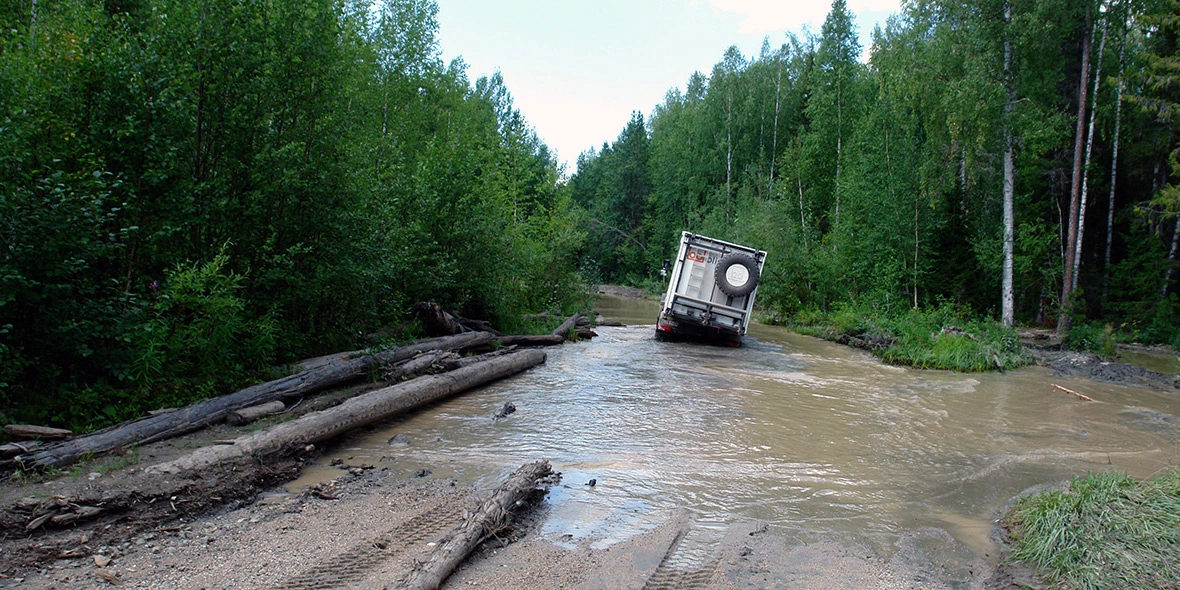
With shovel, lifting bag and machete.
Deep ruts, mud holes, wild vegetation, marshy surfaces, dilapidated bridges and riverbeds were the order of the day for the off-road experts on the expedition. And whenever even the extraordinary off-road capability and fording depth of the Unimog met their match, the drivers had to lend a hand: with a machete they cleared the road of trees, dug out the tyres with shovels and sorted out two burst tyres on the other truck with the help of a recovery air cushion. Thanks to a kinetic tow rope, they managed to help pull each other out of the mud time and time again.
A river that seeks its way.
On their four-week journey, the adventurers drove through abandoned villages, happened across gold diggers, hospitable recluses and bear tracks and had to turn around at dead-ends several times. It wasn't just nature that barred their way, but also the fences of a Russian power company. The forestry and pipeline roads marked on Open Street Maps weren't just on extremely inaccessible terrain but were not connected to one another. And so the vehicles had to struggle through to the Manpupuner rock formations by trial and error. These detours often cost them several days because it was repeatedly a case of: "turning round, going back for two days to the last junction and then taking the other turn-off. Just like a river that finds its own path," says Günther Schumacher.
